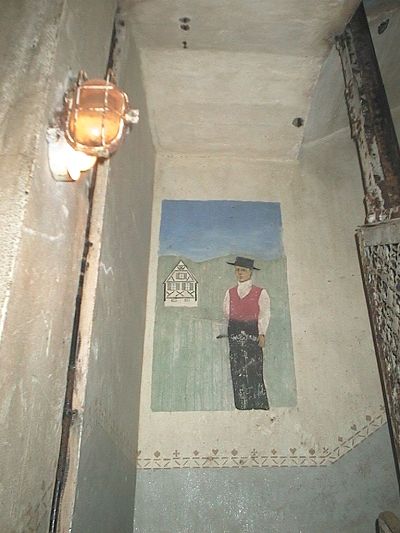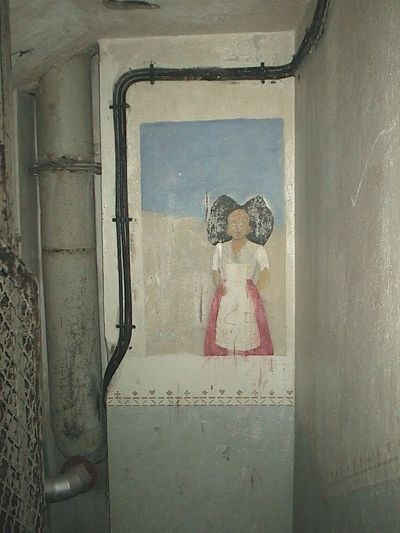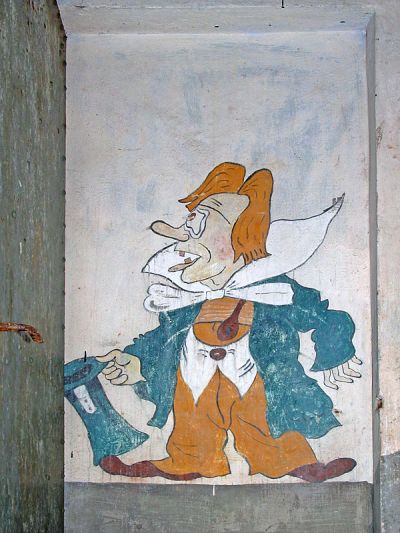The forts and casemates of the Maginot Line were first occupied on a war footing during the Munich Crisis of 1938. Smaller works enjoyed a three- crew system (as described in our main Maginot section); when manned in anticipation of actual action, the crews remained in situ. The monotony which the phoney war brought caused the crews to attempt to enliven an otherwise dull existence. Constructed of concrete and largely located below ground, the existence was, to say the least unpleasant. The veterans have often commented about the near-utopian conditions to be found in those works which are preserved today; much effort has been expended to stabilize them environmentally and the deprivations of cold and damp that the crews endured in 1939 and 1940,have been largely eradicated. Military discipline was enforced in its most extreme manifestation; no running or smoking was allowed and while inhabited areas were heated, this only had the effect of condensing the air and producing extreme damp in other parts of the forts.
The examples below are photographs of the so-called 'Maginot Art'; all examples shown are originals dating from the period of inactivity from the declaration of war through to the commencement of actual hostilities. Typically, the subjects ranged from things seen locally and parodies of everyday life in the fortress, through to images of popular culture.




